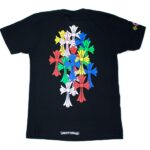In the ever-evolving world of digital media, the demand for engaging and interactive content has skyrocketed. Expert 2D animation services are at the forefront of this trend, leveraging interactive narratives to captivate audiences and create immersive experiences. This essay explores the concept of interactive animation, the role of 2D animation services in this domain, and the various ways interactive narratives are revolutionizing audience engagement.
The Evolution of Interactive Animation
Interactive animation represents a significant evolution in the animation industry, moving beyond traditional linear storytelling to create dynamic, participatory experiences. This type of animation allows viewers to interact with the narrative, influencing the direction of the story and engaging with characters in a more meaningful way. The rise of interactive animation can be attributed to several factors:
- Technological Advancements: The development of sophisticated animation software and interactive platforms has made it possible to create complex, interactive narratives. These technologies enable animators to integrate user input into the story, creating a seamless and immersive experience.
- Changing Audience Expectations: Modern audiences, particularly younger generations, expect more interactive and engaging content. The popularity of video games, interactive apps, and virtual reality experiences has heightened expectations for all forms of digital media.
- Educational and Marketing Applications: Interactive animations are increasingly being used in educational and marketing contexts. They offer a compelling way to deliver information, teach concepts, and promote products, making them valuable tools for educators and marketers.
The Role of Expert 2D Animation Services
Expert 2D animation services play a crucial role in the creation of interactive narratives. These services encompass a range of skills and expertise, from character design and storyboarding to animation and coding. Here’s how professional 2D animators contribute to the development of interactive animations:
- Concept Development and Storyboarding: The foundation of any successful interactive animation is a well-crafted concept and storyboard. Expert animators work closely with clients to develop engaging storylines and interactive elements. They create detailed storyboards that outline the flow of the narrative and identify key interaction points.
- Character Design and Animation: Characters are central to interactive narratives. Professional 2D animators design and animate characters that are visually appealing and capable of expressing a wide range of emotions and actions. These characters must be versatile enough to respond to user input and adapt to different narrative paths.
- Interactive Elements and Coding: Integrating interactivity into animations requires specialized coding skills. Expert 2D animators often collaborate with programmers to develop interactive elements, such as clickable objects, branching storylines, and user-controlled animations. This collaboration ensures that the animation is both visually stunning and functionally seamless.
- Sound Design and Voice Acting: Sound design and voice acting are critical components of interactive animations. Professional animators work with sound designers and voice actors to create immersive audio experiences that enhance the overall narrative. This includes background music, sound effects, and character voices that respond to user interactions.
- Testing and Refinement: The development of interactive animations involves rigorous testing and refinement. Expert animators conduct user testing to identify any issues and gather feedback. They use this feedback to make necessary adjustments, ensuring that the final product is engaging, intuitive, and glitch-free.
Interactive Narratives in Action
Interactive narratives can take many forms, from educational games and marketing campaigns to interactive stories and training simulations. Here are a few examples of how interactive 2D animations are being used to engage audiences:
- Educational Games and Simulations: Interactive animations are widely used in educational settings to teach complex concepts in an engaging way. For example, an animated simulation of a historical event might allow students to explore different scenarios and see the impact of their decisions on the outcome. These interactive experiences can enhance learning by making abstract concepts more tangible and memorable.
- Marketing Campaigns: Brands are increasingly using interactive animations to capture the attention of their target audiences. For instance, an interactive advertisement might allow users to explore a virtual showroom, interact with products, and make purchasing decisions. These animations not only engage viewers but also provide valuable data on user preferences and behavior.
- Interactive Storybooks: For children’s entertainment and education, interactive storybooks combine traditional storytelling with interactive elements. Young readers can influence the direction of the story, interact with characters, and engage with educational content. These storybooks foster a love of reading while promoting critical thinking and problem-solving skills.
- Corporate Training and Onboarding: Interactive animations are also used in corporate training programs to create engaging and effective learning experiences. For example, an interactive training module might simulate real-world scenarios, allowing employees to practice their skills and receive immediate feedback. This approach can improve knowledge retention and job performance.
The Benefits of Interactive Animation
The use of interactive 2D animation services offers numerous benefits, both for creators and audiences. These benefits include:
- Enhanced Engagement: Interactive animations capture and hold the audience’s attention by involving them directly in the narrative. This increased engagement can lead to better retention of information and a more enjoyable experience.
- Personalized Experiences: Interactive narratives allow users to shape their own experiences, creating a sense of ownership and personal connection to the content. This personalization can enhance user satisfaction and loyalty.
- Educational Effectiveness: Interactive animations are particularly effective in educational contexts, where they can make learning more engaging and interactive. By allowing students to explore and experiment, these animations can deepen understanding and promote active learning.
- Data Collection and Analysis: Interactive animations provide valuable insights into user behavior and preferences. By tracking user interactions, creators can gather data that can inform future content development and improve user experiences.
- Brand Differentiation: For marketers, interactive animations offer a unique way to stand out in a crowded digital landscape. By providing memorable and engaging experiences, brands can differentiate themselves and build stronger connections with their audiences.
Challenges and Considerations
While the potential of interactive animations is vast, creating high-quality interactive narratives comes with its own set of challenges and considerations:
- Technical Complexity: Developing interactive animations requires a combination of animation and programming skills. This complexity can increase production time and costs, making it important to carefully plan and budget for these projects.
- User Experience Design: Ensuring a smooth and intuitive user experience is critical for the success of interactive animations. Poorly designed interactions can frustrate users and detract from the overall experience. Expert animators must focus on creating user-friendly interfaces and seamless interactions.
- Content Balance: Striking the right balance between narrative and interactivity is essential. Too much interactivity can disrupt the flow of the story, while too little can result in a passive experience. Designers must carefully consider how interactive elements enhance rather than hinder the narrative.
- Accessibility: Ensuring that interactive animations are accessible to all users, including those with disabilities, is an important consideration. This involves designing for different devices and incorporating accessibility features such as captions and keyboard navigation.
Conclusion
Expert 2D animation services are transforming the way audiences engage with digital content through interactive narratives. By combining the artistry of animation with the interactivity of modern technology, these services create immersive and engaging experiences that capture the imagination and hold the attention of viewers. From educational games and marketing campaigns to interactive storybooks and corporate training, the applications of interactive animations are vast and varied. As technology continues to evolve, the potential for interactive animation will only grow, offering new and exciting ways to engage audiences and tell compelling stories. Through meticulous planning, creative storytelling, and technical expertise, professional 2D animators are paving the way for a future where interactivity is at the heart of digital media.



